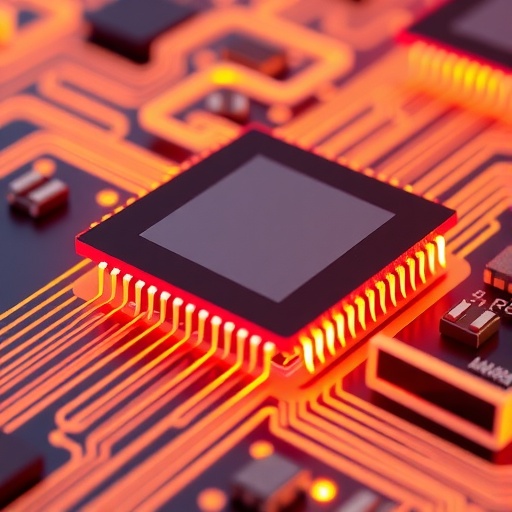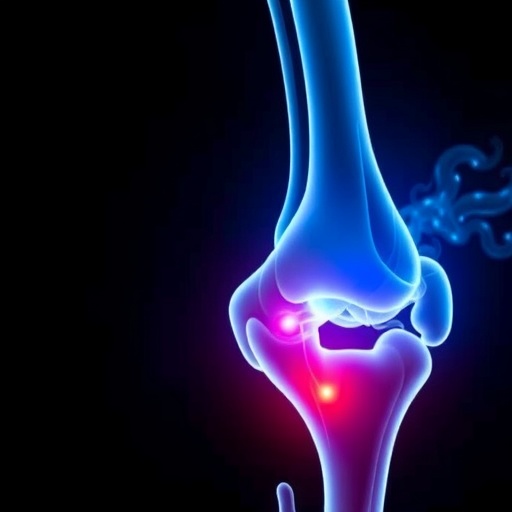In the ever-evolving landscape of digital storage technology, NAND flash memory stands as the cornerstone of modern data retention systems. Its widespread deployment spans from everyday consumer electronics to high-performance computing platforms. However, as the demand for energy-efficient, high-capacity storage solutions continues to escalate—propelled largely by the surge in artificial intelligence and data-centric computing—there is an urgent need to overcome longstanding limitations of NAND flash architectures. Researchers have now heralded a breakthrough that promises to redefine the energy dynamics and operational efficacy of NAND flash memory via an innovative ferroelectric transistor design.
Traditional NAND flash memory relies on a distinctive “string” architecture where multiple memory cells are electrically connected in series. Despite its effectiveness in dense data storage, this configuration necessitates the application of high “pass voltages” to cells not selected for read or write operations within the string. These elevated voltages ensure signal integrity and data accuracy but unfortunately lead to significant energy overheads. This high-voltage operation contributes dominantly to the overall power consumption, posing a formidable barrier to scaling down power demands for large-scale and embedded memory systems.
Attempting to reduce the pass voltage in NAND strings intuitively seems like a straightforward path to curtail energy expenditure. However, the reality presents a challenging tradeoff: lowering the pass voltage reduces the “memory window,” the voltage margin that determines the clear distinction between different stored logic states. Consequently, a diminished memory window restricts the potential for multi-level cell (MLC) operation, which is crucial for enhancing data density by allowing multiple bits per cell. This limitation caps storage expansion and stalls power efficiency improvements, creating a technological bottleneck.
Addressing this conundrum, a team of researchers has introduced a pioneering ferroelectric field-effect transistor (FeFET) architecture that not only slashes pass voltage requirements but also achieves exceptional multi-level storage capabilities. The FeFET is engineered with a gate stack composed primarily of zirconium-doped hafnia—a recently celebrated ferroelectric material known for its robust switchable polarization and compatibility with existing semiconductor fabrication processes—coupled with an oxide semiconductor channel. This material combination enables ultra-low operating voltages while preserving distinct and stable memory states.
What distinguishes this breakthrough is the FeFET’s ability to secure up to five bits per cell through multi-level operation. This surpasses or at least matches the leading-edge capacity of conventional NAND technology and marks a pivotal milestone in storage memory scaling. Achieving such a high bit count per cell typically demands a wide memory window and precise threshold voltage control, and this novel FeFET configuration demonstrates both with unprecedented finesse.
In tangible terms, the reduction in pass voltage—and nearly complete elimination of it in certain contexts—translates to enormous energy savings. The research indicates that string-level operations employing these FeFETs consume up to 96% less power compared to current standard NAND flash strings. Such an energy efficiency leap is transformative, particularly for battery-dependent devices and large-scale data centers where power consumption directly affects operational costs and environmental impact.
The significance of these ferroelectric transistors extends beyond planar integration. The researchers have successfully demonstrated three-dimensional stacking of FeFET layers, integrating them into vertical structures with channel lengths impressively minimized to 25 nanometers. This aggressive scaling does not compromise the electrical robustness or the reliable operation of the memory cells. On the contrary, the vertical FeFET stacks sustain their low-pass-voltage operation, bringing the promise of ultra-dense, energy-efficient 3D memories closer to reality.
This advancement could catalyze a paradigm shift in the flash memory industry by ushering in a generation of devices that combine ultra-high density, reduced power profiles, and superior reliability. With data proliferation accelerating in nearly every sector—from autonomous vehicles and edge AI devices to cloud infrastructures—the need for such next-generation memory solutions is more pressing than ever.
While traditional efforts to reduce NAND power consumption have often entailed complex circuit-level optimizations or marginal process improvements, the FeFET approach attacks the problem at the material and device physics level. The ferroelectric gate stack’s ability to maintain stable polarization states at low voltages is the key enabler, sidestepping the constraints imposed by conventional charge storage mechanisms in flash cells.
Moreover, this technology inherently supports the development of non-volatile memory that operates closer to standard logic voltage levels, potentially simplifying peripheral circuits and reducing the overall system footprint. The compatibility of zirconium-doped hafnia with existing complementary metal-oxide-semiconductor (CMOS) processes further enhances the feasibility of this technology’s industrial adoption without necessitating radical changes to fabrication infrastructure.
The breakthrough also opens up avenues for novel memory architectures that can more seamlessly blend storage and logic functionalities, a holy grail in the quest for more efficient computing paradigms. For instance, integrating ferroelectric memories tightly with processors could radically improve data-access speeds and energy efficiency, supporting future AI workloads demanding vast and rapid memory access.
In conclusion, the development of ultralow-power FeFET-based NAND memory represents a landmark stride in semiconductor device innovation. By overcoming the erstwhile intractable energy-performance tradeoff inherent in NAND string operations, this technology not only elevates storage density but dramatically reduces power consumption, offering a sustainable pathway for future data storage solutions. The advance embodies a fusion of cutting-edge materials science, device engineering, and architectural innovation that is set to energize the next decade of memory technology.
As the digital world continues to generate data at an unprecedented pace, these ferroelectric transistors may well become the cornerstone of a new generation of high-performance, energy-efficient, and scalable memory devices, empowering everything from handheld gadgets to sprawling data centers. The future of memory technology is set to be not just bigger and faster but smarter and greener, thanks to this remarkable scientific breakthrough.
Subject of Research:
Ferroelectric field-effect transistors (FeFETs) for energy-efficient, multi-level NAND flash memory operation
Article Title:
Ferroelectric transistors for low-power NAND flash memory
Article References:
Yoo, S., Kim, T.J., Nam, SG. et al. Ferroelectric transistors for low-power NAND flash memory. Nature (2025). https://doi.org/10.1038/s41586-025-09793-3
Image Credits:
AI Generated
DOI:
https://doi.org/10.1038/s41586-025-09793-3
Tags: advancements in NAND flash architectureartificial intelligence in data storagechallenges in memory scalingdata retention technologyenergy dynamics in flash memoryenergy-efficient digital storageferroelectric transistor technologyhigh-capacity storage solutionsinnovative semiconductor designslow-power NAND flash memoryoperational efficacy of NAND flashreducing power consumption in memory systems





